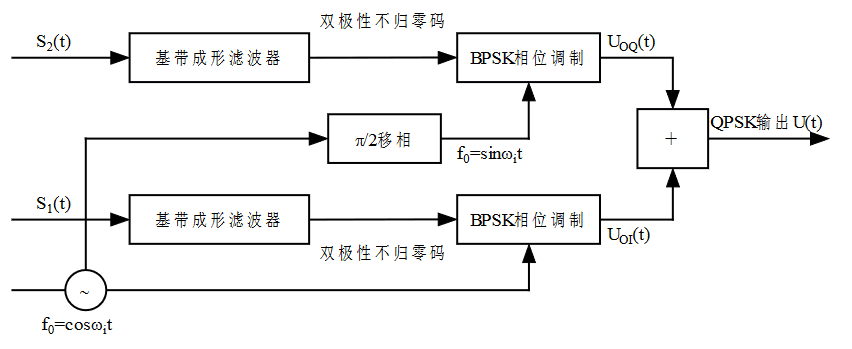Reasons for Using QPSK in DVB-S#
The purpose of selecting a modulation scheme is to match the characteristics of the transmitted signal with the transmission channel, so that the receiving end can receive the signal without distortion as much as possible.
The satellite communication channel of DVB-S is a band-limited nonlinear constant-parameter channel, which has the following requirements for the modulation scheme:
- Due to the nonlinearity and AM/PM effect of the satellite channel, the modulated waveform is required to have equal amplitude.
- Due to the band-limited characteristics of the satellite channel, the modulation scheme is required to occupy a narrow RF bandwidth and efficiently utilize the available bandwidth.
- Digital communication systems require modulation techniques with low error rates under the same $\frac{E_b}{n_0}$ conditions, strong anti-interference ability, and power saving for satellite transponders.
In summary, PSK is superior to ASK and FSK in terms of bandwidth utilization and anti-interference capability. In order to further improve the bandwidth utilization, it has evolved from BPSK to QPSK.
In the DVB-S system, traditional absolute mapping Gray code QPSK modulation is used.
QPSK Modulation Principle#
Phase-shift keying (PSK) is a digital modulation technique that uses the control of the oscillating phase of a carrier signal to transmit digital information. Quadrature phase-shift keying (QPSK) is a four-phase modulation scheme that uses two binary symbols to form a four-phase, two-bit symbol. This results in four different two-bit symbols: 00, 01, 10, and 11, which are respectively associated with four different phases of the carrier. Generally, the four phases are equally spaced, which minimizes the average error probability.
In DVB-S, QPSK uses absolute phase modulation. The block diagram is as follows:

QPSK Demodulation Principle#
QPSK demodulation mainly involves the processes of carrier synchronization and bit synchronization.
The purpose of carrier synchronization is to recover the carrier signal at the receiving end that is in phase and frequency with the transmitter, in order to achieve demodulation at the receiving end. Bit synchronization is used to recover the bit synchronization clock signal at the receiving end that is the same as the transmission bit rate, to ensure that each data bit is sampled only once, and that the sampling point is the optimal position. Before the synchronization process, a matched filter is added to eliminate intersymbol interference, so that the signal entering the synchronization process is in the state of the highest signal-to-noise ratio.
[[QPSK modulation&demodulation]]